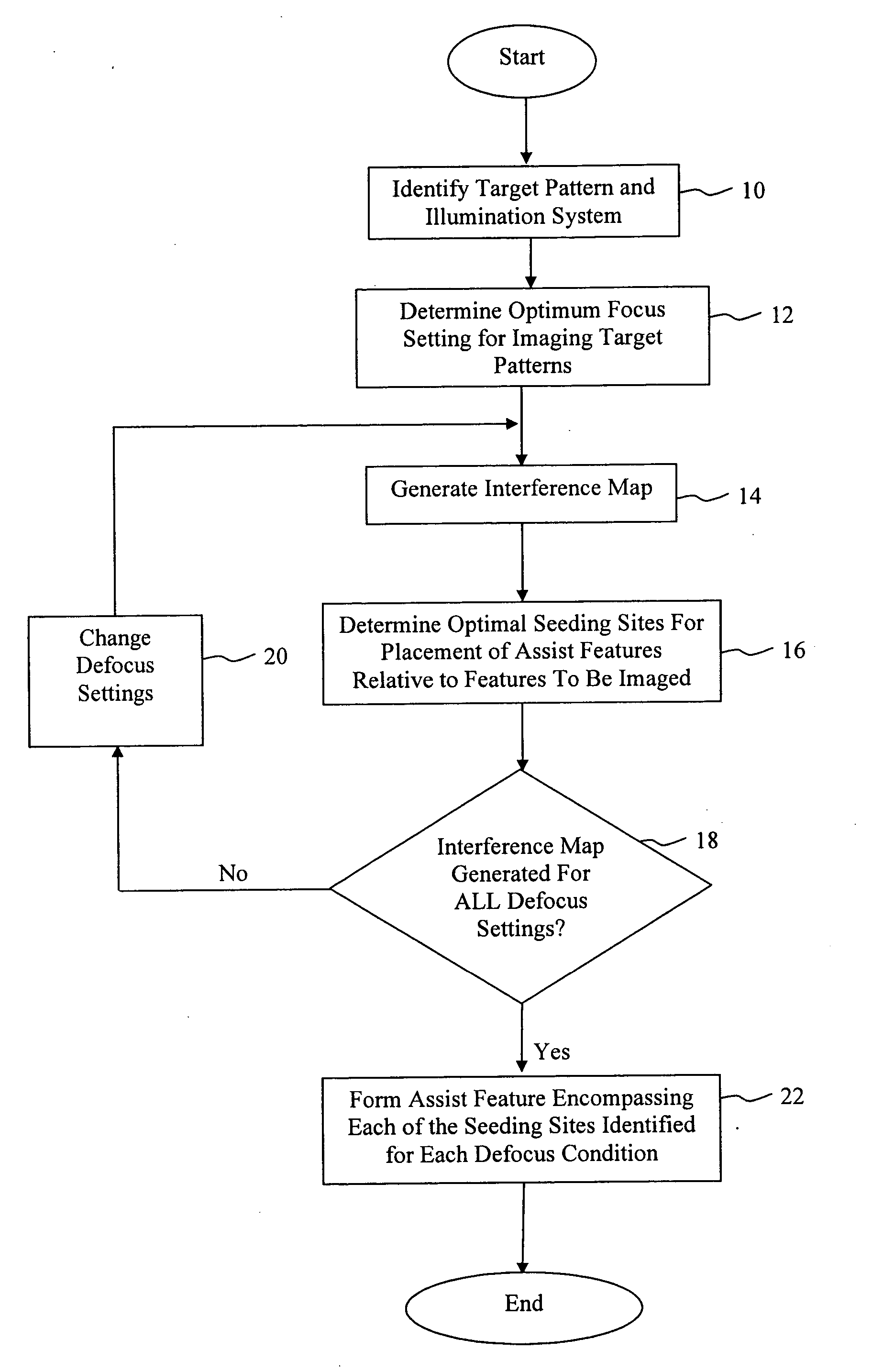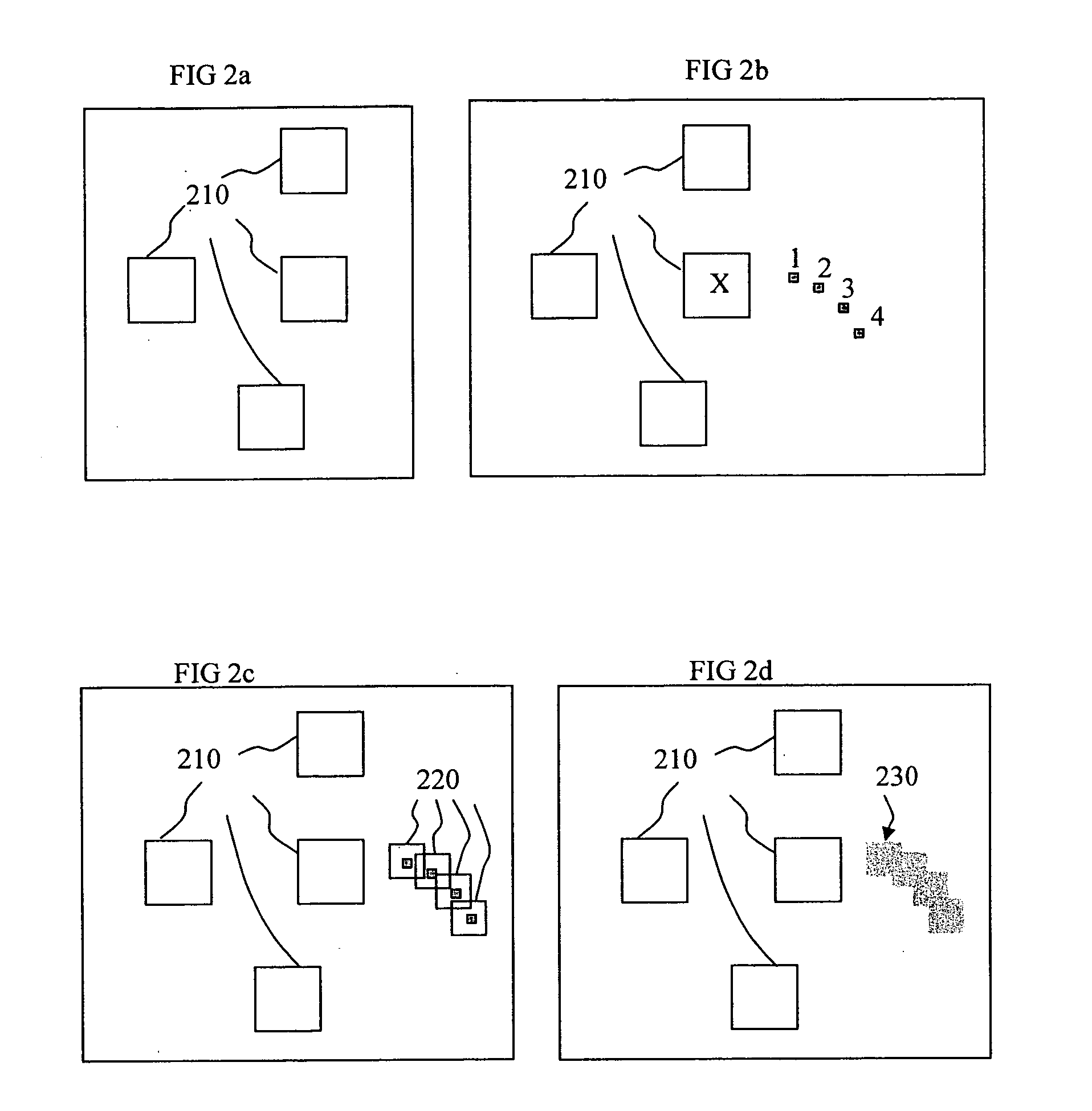Method, program product and apparatus for model based scattering bar placement for enhanced depth of focus in quarter-wavelength lithography
- Summary
- Abstract
- Description
- Claims
- Application Information
AI Technical Summary
Benefits of technology
Problems solved by technology
Method used
Image
Examples
first embodiment
[0035]FIG. 1 is an exemplary flowchart illustrating the method of applying assist features to a mask pattern in accordance with the present invention. The first step (Step 10) in the process is to identify the target mask pattern and illumination system and settings to be utilized to image the pattern. An exemplary target pattern comprising contact holes 210 is shown in FIG. 2a. The next step (Step 12) in the process is to determine the optimal focus setting for imaging the target pattern utilizing the given imaging system. As is known, the optimum focus setting can be determined either by a calibration or simulation process. The next step in the process (Step 14) is to generate an interference map (IM) for the target pattern utilizing the optimum focus setting. As noted above, the interference map can be generated in the manner disclosed in U.S. patent application Ser. No. 10 / 756,830. Once the interference map is generated, it is utilized to determine the optimal seeding sites for ...
second embodiment
[0042] In the present invention, a process is disclosed for optimizing the size and shape of the assist features disposed in the target pattern. As is known, for most robust assist feature performance, it is desirable to form the assist features as large as possible. Moreover, larger assist feature dimensions result in an easier mask manufacturing process. However, as noted above, the assist feature must not be printable under nominal printing conditions for the CD target features. Known prior art methods typically utilized a traditional rule-based approach to define the size of the assist feature, where X & Y size limits where predefined. While such approaches have been effective, it is more desirable to be able to tune the X and Y dimension of the assist feature according to the optical neighbors, especially when utilizing the assist feature generation method discussed above, which can produce assist features having very irregular shapes, such as shown in FIG. 3. Indeed, when util...
third embodiment
[0051] In the present invention, the interference map is utilized to determine whether the given features in the target pattern represent strong or weak features with respect to imaging performance. More specifically, the interference map is analyzed to determine the intensity of the interference at the locations of the features within the mask. Features located at positions having high levels of interference are considered strong features that will image easily. Alternatively, features located at positions exhibiting reduced levels of interference may exhibit unacceptable imaging results. Once defined, as explained in detail below, additional steps can be taken to ensure acceptable printing of the weak features.
[0052]FIG. 7 illustrates a flowchart describing the method of defining features to be imaged as either a weak feature or a string feature with respect to the imaging process. The first step (Step 710) is to define the target pattern and the illumination system to be utilized...
PUM
 Login to View More
Login to View More Abstract
Description
Claims
Application Information
 Login to View More
Login to View More - R&D
- Intellectual Property
- Life Sciences
- Materials
- Tech Scout
- Unparalleled Data Quality
- Higher Quality Content
- 60% Fewer Hallucinations
Browse by: Latest US Patents, China's latest patents, Technical Efficacy Thesaurus, Application Domain, Technology Topic, Popular Technical Reports.
© 2025 PatSnap. All rights reserved.Legal|Privacy policy|Modern Slavery Act Transparency Statement|Sitemap|About US| Contact US: help@patsnap.com



